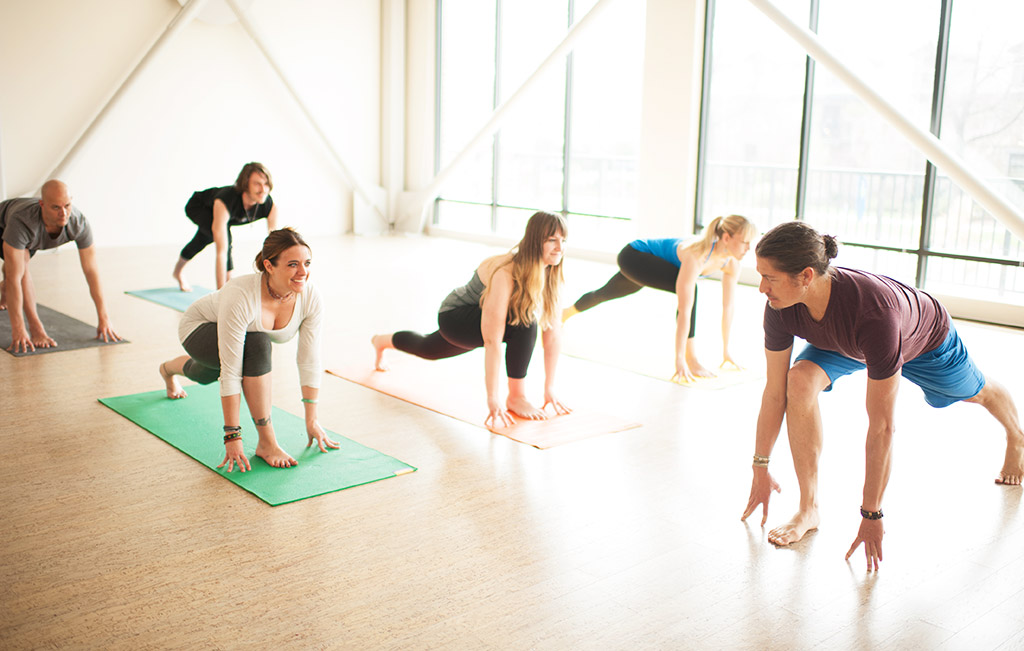
Ahimsa (non-harming) is the cornerstone of the Yamas (the ethical principles of yoga). As the first principle of the first of yoga’s Eight Limbs, ahimsa can be seen as the cornerstone of the entire practice. So of course, ahimsa is also the most important foundation for teaching yoga.
My favorite definition of ahimsa comes from the introduction of Alistair Shearer’s translation of the yoga sutras. (His is my favorite translation. But it’s worth buying this book just for the intro.) Shearer calls ahimsa “dynamic peacefulness.” I love this translation because it declares peacefulness to be a dynamic, rather than a static, quality. Peacefulness is an ever-shifting process. It adapts to our present reality.
Ahimsa and Mindful Speech
As teachers and teacher trainers, we talk a lot about creating “safe space” for our students. But what does that mean? There are many ways to create safe space. In this post, I’d like to focus on a huge area of ahimsa study and practice: mindful speech.
Safe space requires that teachers practice mindful speech. This is a complex, far-reaching practice that we hone both on and off the mat. As teachers, clear, concise, non-judgmental speech is crucial. It’s important to spend some time coming up with inclusive wording for our alignment instructions. This means giving options for students whose bodies may not be capable of performing certain actions. And it means saying it in a way that doesn’t diminish. For example, instead of “if you can’t do such and such, do this instead,” you could say, “if such and such a movement doesn’t feel healthy, try this instead.”
Another way to be inclusive in your classes is to suggest that everyone use yoga props for certain poses. Yoga props—yoga blocks, straps, blankets, etc.—are not simply for those who can’t practice the most extreme version of a pose. They can be helpful for teaching alignment to every student. Suggesting that everyone use props takes away any stigma your students may have attached to using them. It can help smooth out the hierarchies that we often invent to judge ourselves and others.
Language that is both clear and concise, and mindful of our students’ differences is a delicate balance. Ahimsa requires that our language—and the intention behind it—takes into account each student’s uniqueness. Humans are not cookie cutters. All of us come into the world with different genetics. Each student has unique abilities and challenges.
In addition, as teachers, we need to understand that asana is not about accomplishing gymnastic feats. I’ve been in workshops where the teacher asked everyone to applaud the most flexible students, while so many others were never acknowledged. This only strengthens the comparing, judging mind—the opposite of the goal of practice.
Mastery of asana means letting go of effort so that we can be the pose, rather than doing the pose. The student who can barely touch her toes may, in fact, be practicing effortless being in her pose. At the same time, the person who’s performing magnificent feats of flexibility may be caught up in her ego. A deep understanding of the purpose of practice can help us decondition judgments about our students’ practice.
Practicing satya (truthfulness) is crucial for creating a safe container. For example, when a student asks us a question that we don’t know the answer to, it’s important that we say so. Making something up in order to save face may cause harm. Instead, we can explore the question with the student, or explore it on our own after class. This gives us an opportunity to learn something new, and that’s always a good thing.
Here’s something I used to say to students in the early days of my teaching practice. When a student complained of not being able to practice the “fullest expression” of a pose, I used to sometimes tell them that with enough practice, they’d be able to do it someday. This was before I understood that skeletal differences make it easy for some people to do certain poses, and impossible for others to do them. Implying that they just need to try harder likely only leads to frustration and judging. Again, we’re all unique, and it truly doesn’t matter whether or not you ever accomplish the “fullest expression” of a pose.
Ahimsa through mindful speech also requires that we keep our opinions of other teachers and yoga styles to ourselves. I may personally not be attracted to a certain teacher or yoga style, but I never offer my opinions to my students. If they ask me about a teacher or yoga style, I suggest that they try it out and see for themselves whether it’s compatible with their own body-mind. Gossiping about another teacher may also plant the idea that we are prone to gossiping about our students as well—not a safe situation for students.
Finally, do your best to stay focused on your students. Sharing personal stories can sometimes be helpful. Stories can make certain concepts more relatable. Stories that illustrate how you went from misunderstanding to knowledge can humanize you. But it’s best to limit the amount of time you talk about yourself. Your students are here to practice. Focus your speech on them, and give them some silent time to move inside.
Teaching from the foundation of ahimsa is a lifelong practice. It takes years to hone. You’ll likely stumble, more than once. But use these stumbles as opportunities to learn. Humility and humor are allies in this learning process. So, be sure to practice ahimsa for yourself too.
